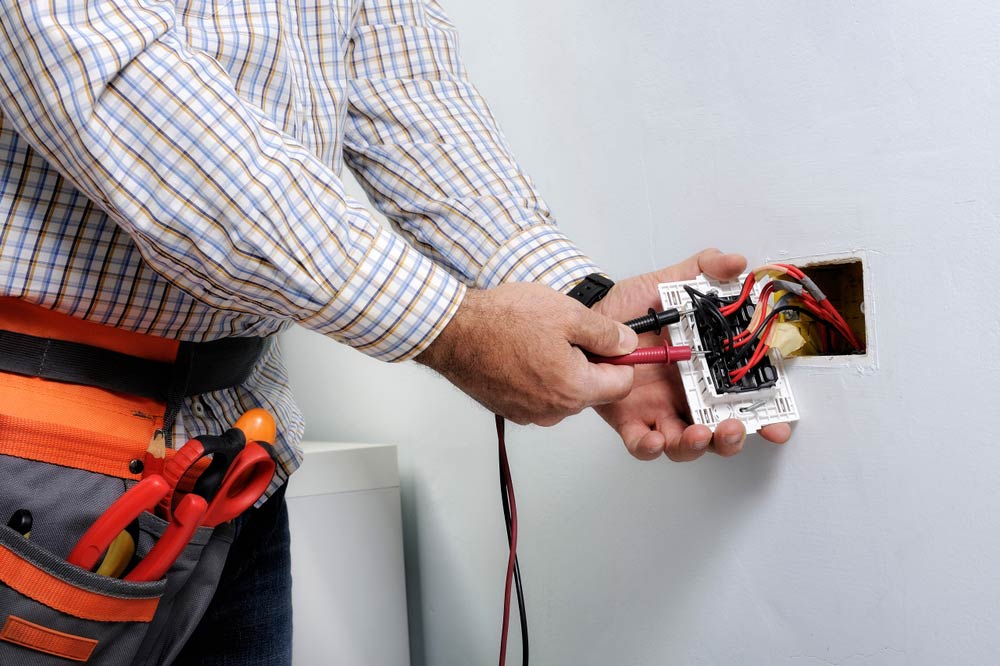Custom-made BRE Electrical Solutions for Efficient and Safe Installations
Custom-made BRE Electrical Solutions for Efficient and Safe Installations
Blog Article
Demystifying Electric Setup: Recognizing Codes and Rules for a Legal and Safe Setup
In the world of electric installation, adherence to codes and policies is vital to make certain both legitimacy and safety. The trip to demystifying electric setup goes beyond mere knowledge with policies; it necessitates a profound understanding of exactly how to execute risk-free electric practices efficiently.
Value of Electric Codes
The adherence to electrical codes is crucial in making sure the safety and reliability of electrical setups. Electric codes function as a collection of requirements and standards that dictate the appropriate design, installment, and upkeep of electric systems. These codes are developed to decrease the risk of electrical threats, fires, and other safety and security worries that might emerge from faulty electrical job.

Moreover, electric codes are consistently upgraded to integrate brand-new innovations, best techniques, and safety and security actions. Remaining updated with these codes is essential for professionals in the electrical market to ensure that their work meets the newest safety and security standards. Ultimately, the importance of electric codes lies in producing a safe and effective electrical facilities that profits both individuals and neighborhoods.
Key Rules for Safety And Security
Several essential regulations control the safety and security standards in electrical installments. One key policy is the National Electric Code (NEC), which gives standards for risk-free electrical style, installation, and examination to safeguard people and building from electric threats. The NEC covers aspects such as electrical wiring techniques, grounding, overcurrent protection, and equipment setup to make sure a secure electrical system.
Another important regulation is the Occupational Safety And Security and Health And Wellness Management (OSHA) criteria, which concentrate on the safety of employees associated with electric installations (BRE Services). OSHA laws include demands for correct training, safety and security treatments, and personal protective devices to avoid office crashes and injuries
Moreover, the International Electrotechnical Payment (IEC) criteria aim to integrate electric installment guidelines on a worldwide scale. These requirements address issues like electric tools safety and security, electro-magnetic compatibility, and power efficiency to promote harmony and safety and security in electric installations worldwide.
Conformity with these vital regulations is important to guarantee the security and legitimacy of electric setups, securing both people and building from the risks connected with electricity.
Recognizing National Electric Code
Key guidelines such as the National Electrical Code (NEC) supply vital guidelines for safe electrical design, setup, and examination to make certain the protection of individuals and residential property from electrical hazards. The NEC, also known as NFPA 70, is a comprehensive collection of requirements for electrical installations that are updated every three years. It is created by the National Fire Protection Association (NFPA) and is commonly taken on throughout the USA.
The NEC covers various elements of electric job, consisting of circuitry approaches, grounding, overcurrent security, and devices setup. It intends to protect individuals and property by addressing prospective risks connected with electrical systems. Conformity with the NEC is commonly imposed by local authorities having territory (AHJs), such as constructing code authorities and examiners.
Comprehending the NEC is crucial for electrical service providers, developers, and inspectors to ensure that installations fulfill the needed security needs. By adhering to the NEC standards, experts can assist avoid electrical crashes and make sure the dependability of electrical systems in residential, commercial, and commercial setups.

Conformity With Local Building Regulations
Recognizing and adhering to neighborhood building codes is vital for making sure the security and conformity of electric installations within a certain territory. These codes outline certain demands for electrical setups, such as the type of wiring to be made use of, positioning of electrical outlets, grounding approaches, BRE Electrical and lots capabilities.
When it comes to electric installations, failing to conform with regional building ordinance can cause severe repercussions. Non-compliant installations may position safety and security dangers, raise the risk of electric fires, and bring about pricey penalties or lawful concerns. Furthermore, insurance provider may decline to cover problems arising from setups that do not satisfy local building ordinance needs. It is imperative for electrical contractors and specialists to remain educated about and purely adhere to the neighborhood building codes applicable to their jobs.
Making Certain Safe Electrical Practices
Exercising strict adherence to developed safety and security protocols is crucial in the area of electrical installments to mitigate possible risks and make certain the well-being of individuals and residential properties. Security in electric work encompasses various facets, starting with the proper training of workers included in installation, maintenance, and repair. It is necessary to follow producer guidelines diligently when dealing with electrical parts and tools. Before commencing any work, it is critical to conduct a comprehensive threat assessment to recognize potential hazards and carry out preventive steps. Using personal safety equipment (PPE) such as shielded handwear covers, shatterproof glass, and non-conductive shoes is non-negotiable to protect versus electrical shocks and arc flashes. Regular tools examinations, screening, and maintenance schedules are important to find and rectify faults before they intensify into safety and security hazards. Adherence to proper lockout-tagout procedures during upkeep tasks is important to avoid accidental energization of circuits. By prioritizing safe practices, electrical setups can work successfully while reducing the chance of mishaps or damage.
Final Thought
To conclude, adherence to electric codes and laws is critical for guaranteeing the security and legality of electrical setups. Comprehending the National Electric Code and compliance with regional building ordinance are necessary for a risk-free configuration. By following these guidelines and exercising safe electric practices, individuals can stop possible dangers and make sure the proper functioning of their electric systems.
Report this page